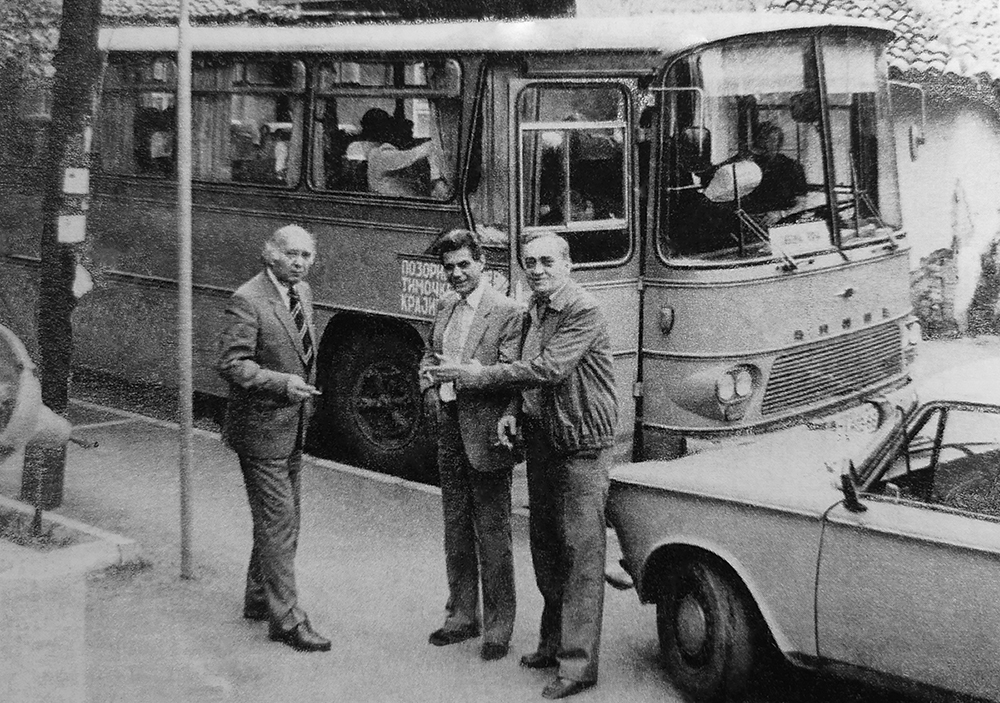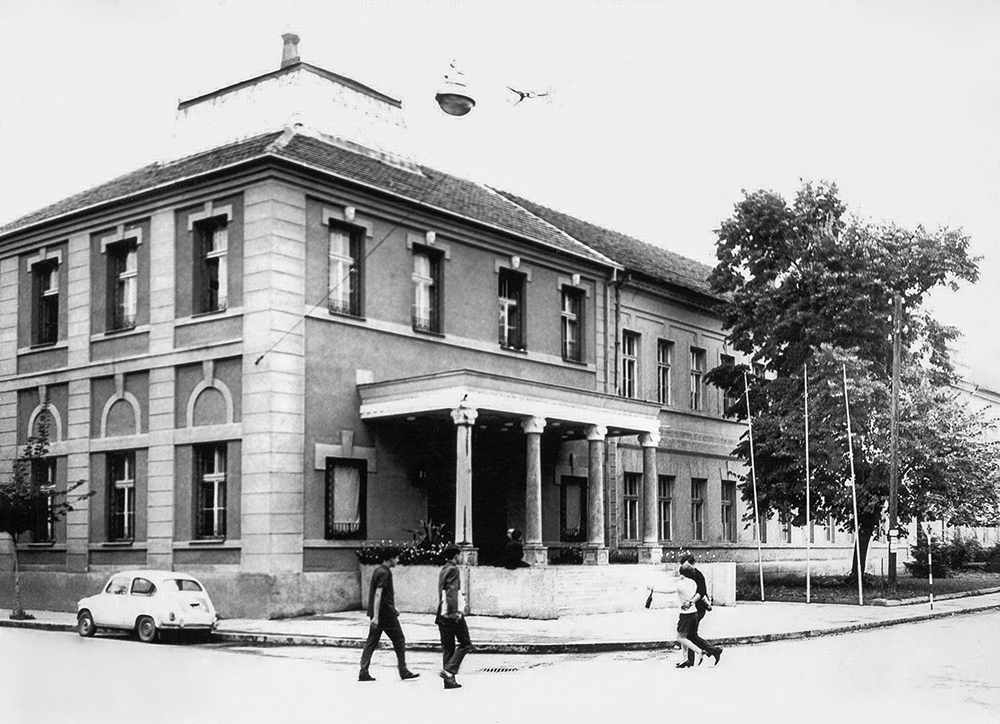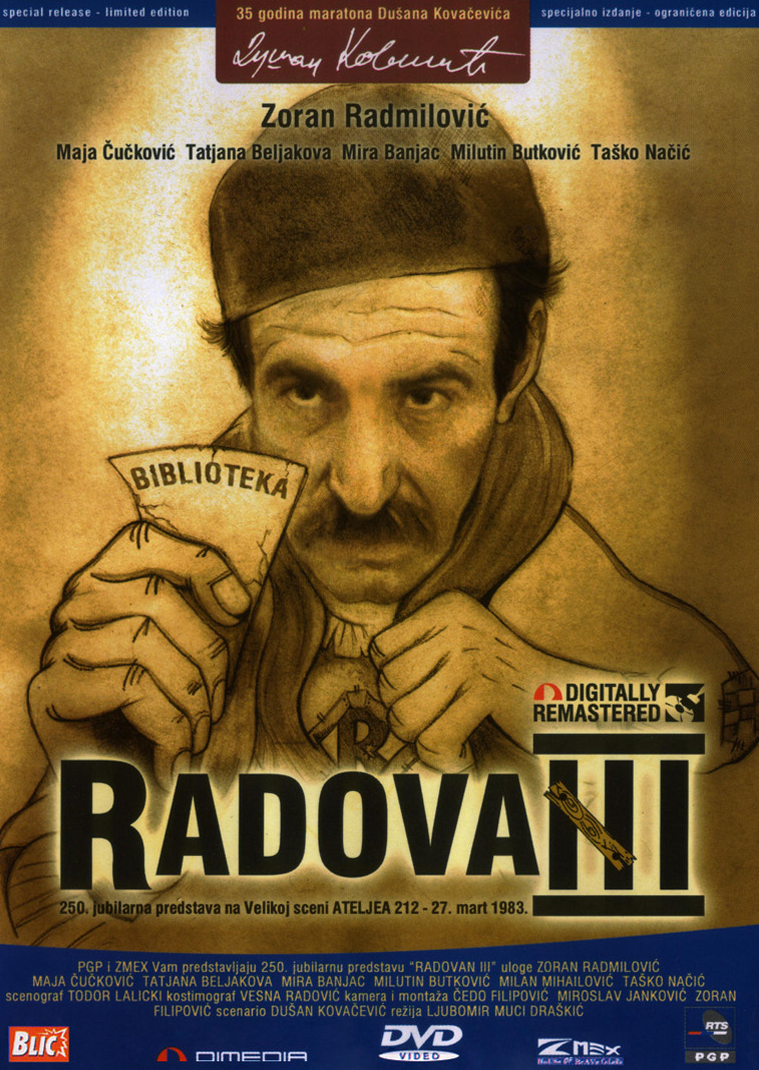
Today's theater building was built in 1904 as a Guildhall and was one of the most beautiful and most impressive ones in the administrative region of Moravska banovina. All important celebrations, parties and balls took place here. It was severely damaged during the battles for the liberation of Zaječar at the end of World War II.

From 1906 to 1912 the Private Girls' Gymnasium worked at the Guildhall building complex, run by Milutin Stanojević. After the law was changed in 1912 which allowed co-education of boys and girls, there was no need for a separate school any longer.

The first Privileged Timok region’s theater “Gundulić” gave performances at kafana “Takovo”. It was closed down in 1912 after all its actors were drafted for the army to participate in the First Balkan War. It was renewed in 1925 as Privileged regional theater of Timok region (The Theater of Timok & Kosovo from 1927 to 1929). During the World War II occupation, the new theater was founded, the Regional theater “Serbia” with performances at the hotel “Zadruga” and occasionally at the Guildhall, and which was closed down again after the liberation in 1944.


Živko Gavrilović Džine (the painter from Negotin and the first set designer) guided the reconstruction of almost completely destroyed Guildhall building. With the help of war prisoners and volunteers, the building was rebuilt in impressively short time. The stage was officially inaugurated on February 2 with the play “The Wheat Fields are Blooming” by Juri Mokrov.

Due to the lack of workforce, the main burden of renovation was carried by the members of the theater’s artistic and technical staff: 40.000 kg of lime has been used, 60.000 bricks, 10.000 roof tiles, 30 cubic meters of stones for the foundation, as well as 50 cubic meters of various construction material. The new, reconstructed building was opened on January 21 with the play “The Village Teacher” by Petar S. Petrović.

From 1952 to 1954 the theater worked as a joint theater of Zaječar and Bor (People’s Theater Zaječar–Bor).

The theater was in great crisis due to new state politics and the decision to liquidate provincial theaters. Thanks to the courage and the intelligence of its managing director Milan Paunović and local government’s disagreement with the state cultural policies, the decision was disobeyed. The theater was saved and has continued to work until our days.

The Council for Education and Culture of People’s Republic of Serbia rewarded the theater with a new bus. At the same time, the housing situation of all members of the theater was resolved, a novelty in theater management, and was shared as a news all over Yugoslavia.

Zaječar Theater had initiated one of the most important theater festivals in Serbia: The Encounters of Serbian Professional Theaters "Joakim Vujić".

Already in 1964, the managing director Milan Paunović signed an agreement with the brothers Bora and Vojislav Dimitrijević, students of the Faculty of Applied Arts, to design a new theater building as their graduation work. The project for the stage equipment was done by Ljubomir Pavlović, while Pera Boškov made the plans for the new heating system. After several years, the director had managed to collect all needed funds and, after a year of reconstruction led by the architect Dušan Bešir, the building was reopened on April 5, 1969. The new stage was made to accommodate the most complicated theater plays, as well as for the guest performances by large theater groups.

The theater had officially become the Theater of Timok Region.

Due to the persistent financial difficulties, only three new plays were performed in the season of 1989/90.

After the idea of regionalization failed, the theater was renamed again and it became the Theater "Zoran Radmilović" Zaječar.

The International Theater Children Festival „ZajeČAR“ has been founded.

The theater became a part of the newly founded cultural institution – The People’s Theater of Timok Region – Cultural Center “Zoran Radmilović“ which organizes around thirty different events in town and surrounding villages, and publishes “Razvitak” Journal for societal issues, culture and art.
THE GUILDHALL (1904–1947)
PRIVATE GIRLS' GYMNASIUM (1906–1912)
The House of Trade Guild, or Guildhall was built here in 1904 and it soon became the center of all cultural activities in Zaječar and its surroundings. Until World War II, all important events, parties, celebrations and festivities took place in this building. The hall itself was the largest one in Moravska banovina, the administrative region Zaječar belonged to in this period.
In 1906, the first Private Girls’ Gymnasium was opened in the building belonging to the Guildhall complex, which became a four-year school in 1908 and six-year school in 1910. It was run by Milutin Stanojević and was funded by donations and fees paid by the students’ parents. The Ministry of Education and Religion occasionally supported its work, as well as the Regional Assembly, Zaječar Brewery, and the City Council. The Girls’ Gymnasium was known for its well-equipped geography and history classroom with maps, atlases and illustrations, while the utensils for other classes were borrowed from the Boys’ Gymnasium. In 1912 the Secondary Education Law had been changed, allowing for boys and girls to attend together classes and schools, hence the girls’ gymnasium was closed down and all pupils transferred to the state gymnasium.
The building was severely damaged during the battles for the liberation of Zaječar in 1944 and had to be rebuilt and extended after the war. Since 1947 the renovated building of the Guildhall has been the home of the main town theatre.

THE PEOPLE'S THEATER OF TIMOK REGION – CULTURAL CENTER "ZORAN RADMILOVIĆ" ZAJEČAR (1947)

FIRST RECONSTRUCTION (1947)
After the World War II, Živko Gavrilović Džine (the painter from Negotin and the first set designer at the theater) guided the reconstruction of almost completely destroyed Guildhall building. With the help of war prisoners and volunteers, the building was rebuilt in impressively short time. The stage was officially inaugurated on February 2nd 1947 with the opening night of the play “The Wheat Fields are Blooming” by Juri Mokrov.

SECOND RECONSTRUCTION (1951)
It soon became clear that the auditorium at the Guildhall building does not provide the basic criteria for theater performances, the fact addressed in an interesting way by its director at the time, Milan Paunović:
"When I arrived, there were neither the technical support nor the stage. It was still the main hall of the Guildhall, which used to host big celebrations and various parties of the guilds. There was a so-called stage part with two columns in the middle where musicians used to be seated etc. It was no real stage at all. Theater performances were played in those circumstances. The ovens were used to heat up the place. There were three of them in the hall and one on stage. The air pressure has a great influence on air circulation, so there were the times when there was so much smoke one would not see the audience. We played comedy, and the audience was crying from all the smoke. Since all those plays had acts, during intermissions, while the set was been replaced, we would open all the doors to have some air in, and only then the play would continue."
Due to the lack of workforce, the main burden of renovation was carried by the members of the theater’s artistic and technical staff: 40.000 kg of lime has been used, 60.000 bricks, 10.000 roof tiles, 30 cubic meters of stones for the foundation, as well as 50 cubic meters of various construction material.
The new, reconstructed building was opened on January 21st in 1951 with the play “The Village Teacher” by Petar S. Petrović. In the period 1952-1954 the theater worked as a joint theater of Zaječar and Bor (People’s Theater Zaječar–Bor).
In 1954, the theater was in great crisis, not due its bad management, but due to the new state politics towards the provincial theaters. The decision was made to close it down, after successfully performing 50 theater plays, 1000 performances, and more than 300.000 viewers in 40 towns. Thanks to the courage and the intelligence of its then director Milan Paunović, as well as to the local government’s disagreement with the state cultural policies, the decision to close down the theater was disobeyed. The political leaders in Zaječar and Bor wanted to keep the theater alive.
Since 1959 the responsibility for the theater was transferred from the regional government to Zaječar City Council. In very short time, it became a respectful and well-organized cultural institution with performances all over Timok region. It did what no other theater in Serbia has done: it spread its cultural mission by “going towards” its audience. The performances took place anywhere with the minimal performing conditions, even if that sometimes meant that the actors had to enter the stage through the window.
A significant event marked 1960 when the Council for Education and Culture of People’s Republic of Serbia decided to reward the theater with a new bus. Also, at that time, the housing situation of all members of the theater was resolved, as explained by the former director Milan Paunović, “The news was like a bomb that was heard all over Yugoslavia. I received phone calls from different republics by people asking me if it was true that all actors were given apartments. In all that, I was just an initiator and a very stubborn man. The theater earned that by its hard work and reputation. When the actors were given apartments, when they had their salaries guaranteed like everybody else in Serbia, there were no drunkards at the theater. There was no gambling either anymore. Everything was as it should be.“ Although in financial difficulties since the beginning, the theater performed 8-12 new theater plays each year.


THIRD RECONSTRUCTION (1969)
In 1964, the theater director Milan Paunović signed an agreement with the brothers Bora and Vojislav Dimitrijević, then students of the Faculty of Applied Arts, to design a new theater building as their graduation work. The project for the stage equipment was done by Ljubomir Pavlović, while Pera Boškov made the plan for the new heating system. After several years, Milan Paunović managed to collect all funds for the project and, after a year of work on the reconstruction led by the architect Dušan Bešir, the building was reopened on April 5th 1969. The new stage was made to accommodate the most complicated theater plays, as well as for the guest performances by large theater groups and opera pieces. During the reconstruction period, the theater continued to work and plays were performed in the People’s Army House.
During this period, it was announced at some point that one of the main roles in a play will be played by Zoran Radmilović, Zaječar-born and one of the most important Serbian actors. Nevertheless, this never happened. The question why was it so that he never performed in a theater which is today named after him still remains open. As some noted down, this was the house full of “actors’ caprice, lucid moods and strange states.” It was remembered that Zoran Radmilović performed on this stage only as a lead character in one of the most famous theater performances in former Yugoslavia, "Radovan III". In an interview, he stated that this was one of the rare moments he had a stage fright, mostly due to the fact that some of the viewers might recognize themselves in this character. Namely, Radmilović built this stage character using a particular type of humor he believed was very specific for Zaječar, and which he did not find anywhere else in his numerous travels.
Unfortunately, since the end of 1970s the theater’s faith went downhill and the fight for its survival is still taking place. Nevertheless, in spite of all that, from its beginnings after World War II until 2018 the theater has managed to performed 420 new plays.


SOURCES:
Suzana Antić, Jelica Ilić, Nina Pogarčić: Zaječar čudesna priča. Iz života u Zaječaru 1466-2006. godine. Narodni muzej Zaječar, Zaječar, 2006.
Gimnazija i stručne škole u Zaječaru 1836/37 – 1986/87. Zaječar, 1987.
Cerović, Vuksan: Pozorište uprkos svemu. Zaječar, Ruma 2008.
Janković, Zoran: “Razvoj trgovine, zanatstva i ugostiteljstva u Zaječaru (1833-1941)”. Arhivsko nasleđe br.4, Zaječar 2006, str.141-145.
Theater Official Website http://zoranradmilovic.rs/

The National Museum building was built in 1927 as a home to the military institute for road design.

Primary school "Ljubica Radosavljević Nada" was officially opened on September 7th 1972. It was desi...

Reconstructed copy of one of the rare surviving examples of the Greek-Oriental house design in Timok...

Technical High School was founded in 1966 and since the beginning was located at the building in whi...